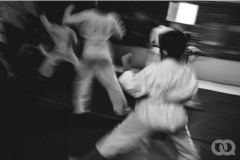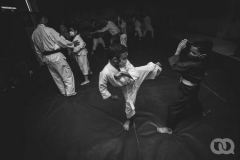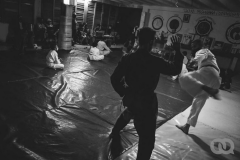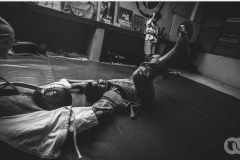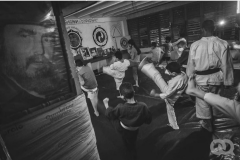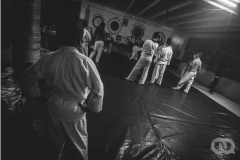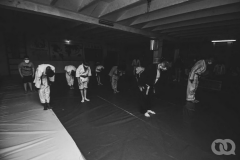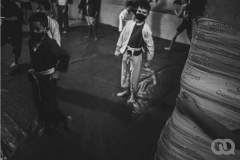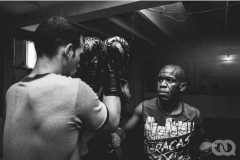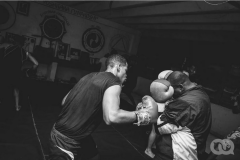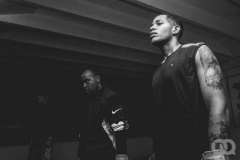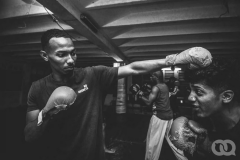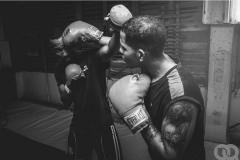A Cuban Martial Arts School that Arose from the Rubble
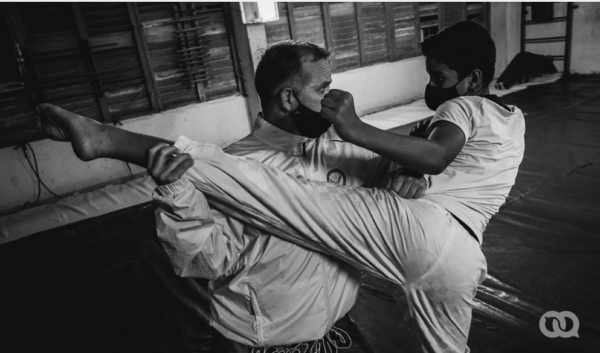
Photo Feature by Yoel Marrero (El Toque)
HAVANA TIMES –In 1997, Juan Antonio Soca, karate-Do and ju-jitsu instructor, currently an active member of Cuba’s Committee for the Martial Arts, had the idea of installing a tatami mat in an abandoned space and converting it to a dojo, a hall for immersive learning in the martial arts. The objective was to offer the residents of Baragua in south-central Cuba, the possibility of learning martial arts. Despite the difficulties, the sensei has now formed generations of athletes there, in a period stretching over nearly 30 years.
I’ve practiced karate since I was little. Even though my school wasn’t the Baragua dojo, I always used to hear talk of an instructor named Soca, known for the way he trained his students. One time I had the opportunity to train in his dojo, as part of my preparation for a tournament. The atmosphere there was one of pure discipline and love for the martial arts, even though it didn’t have all the best conditions.
When as an adult, I settled in Baragua, it was marvelous to once more encounter the dojo and all the memories it held. I approached the teacher to tell him who I was and the work I was doing, and asked him if he remembered me. His response was: “You can imagine how many students have gone through here, so that it’s hard to remember the faces.” Even though he didn’t remember me, he offered me the opportunity to walk onto the tatami and take pictures. I also trained with him a few times. I never imagined that the photographs would give me the possibility of reencountering my childhood and impart a very personal feel to my work project.

Pablo Vera, a martial arts student
I recall that I was five years old when I began in the martial arts. I was a very hyperactive child, short and wiry. Because of that, my parents decided that I should practice some sport. At that time, the sensei offered karate classes from 5 to 6 pm in the residence of officials from the military. That’s where I first met him. Six years later, he founded the “Yositaka Funakoshi” school in Baragua.
I had a lot of energy and it was hard for me to concentrate and stay with one activity for a long time. When I first arrived at the area where karate was taught, it took the teacher a lot of work to keep me in the formation and have me understand the routine I had to follow.
The principal quality of my teacher – in addition to many others that I’ve been able to appreciate during these 30 years working beside him – is the humility that he carries with him everywhere. He’s the kind of person who never talks about himself or his achievements. He sees himself as an equal, despite being the person who knows the most within the dojo. He reflects the same behavior in his entire life, maintaining a lovely way of being, one worthy of a martial arts artist. His attitude has served as an example for me to follow, and also for all those he’s educated in the martial arts arena for generations.
On one occasion, there was an upcoming exam for those at the highest levels of ju-jitsu. I had a black belt and a good record in the martial arts. In the exams, in addition to demonstrating the techniques of your level, you also must enter into combat and demonstrate in real time how you use them, according to your level. The teacher, now over 50, an advanced age for this discipline, was paired with a very young opponent, about 30 years old – strong and quick as you might imagine.
We thought that would be the end of the line for the teacher. Some of us suggested they should change his opponent. But he didn’t allow that to happen. The combat lasted very little time. The teacher feinted a kick and his opponent took the bait and tried to grab his leg. Then, the teacher went around in back of him and put a stranglehold on him together with a joint-lock technique. Those who practice martial arts are aware of how difficult it is to use this technique in a real combat, but he made it look very easy. We applauded for a long time and felt very proud of him.
See more Photo Features here on Havana Times.

